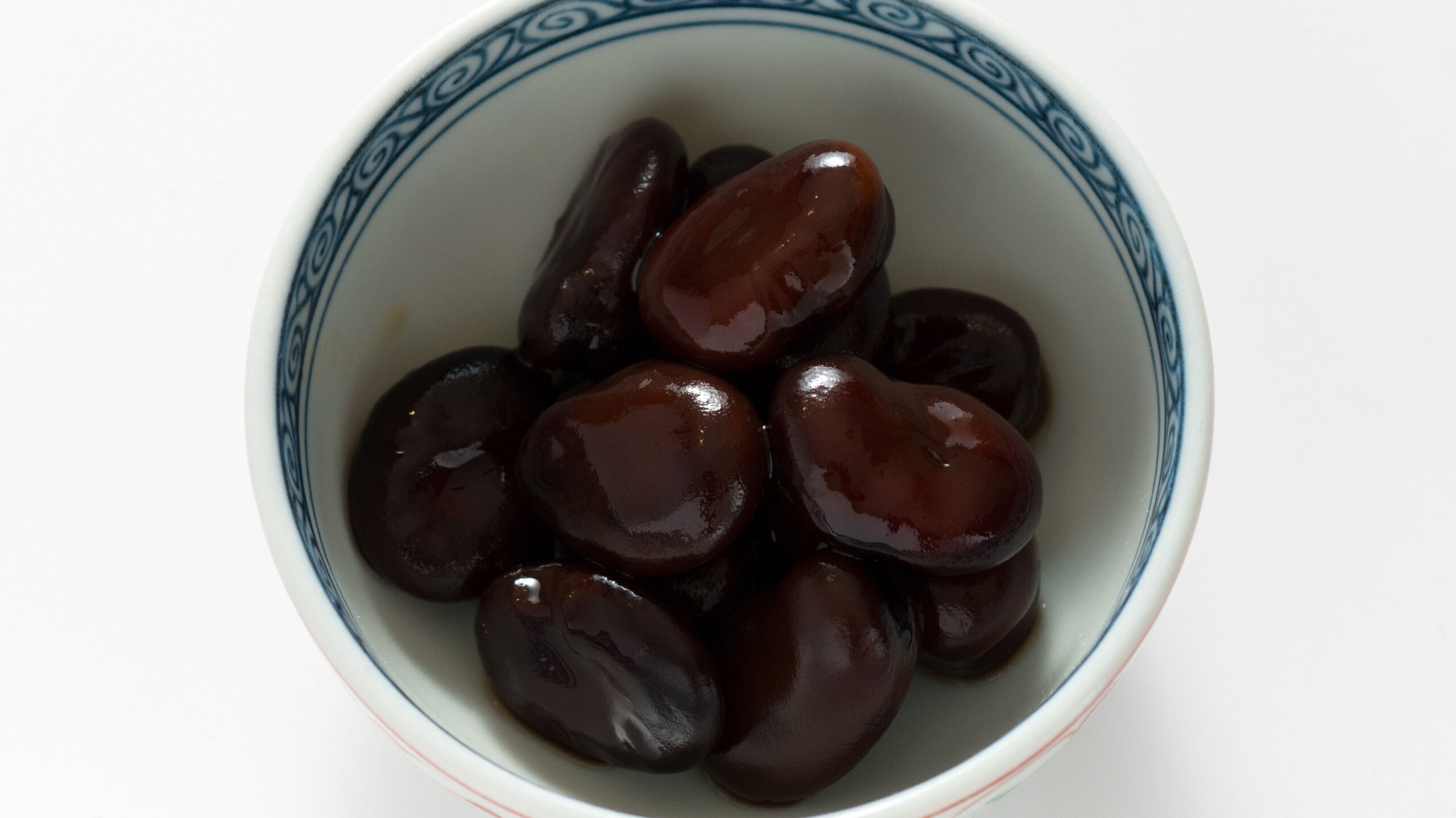
Howdy! Let’s mosey on over to Kagawa Prefecture for a simple yet mighty tasty snack called “Shoyu Mame,” or “Soy Sauce Beans.” Now, these ain’t your regular boiled beans. Nope, they take dried broad beans, roast ’em up nice and toasty, and then dunk ’em in a flavorful mix of soy sauce, sugar, and a little kick of chili while they’re still warm. Roasting the beans before they take a soy sauce bath gives ’em this cool, slightly crunchy texture that just crumbles in your mouth.
Dish Name: Shoyu Mame (Soy Sauce Beans)
- Region / Location: Kagawa Prefecture (entire prefecture)
- Primary Area of Tradition: Entire prefecture
- Main Ingredients: Dried broad beans (fava beans), soy sauce
How It’s Eaten / Served
Shoyu Mame is enjoyed as a snack, a side dish, or a perfect accompaniment to drinks. You just grab a handful and munch away! The whole bean, skin and all, is edible after it’s been roasted and soaked in the soy sauce mixture. The balance of the savory soy sauce, the slight sweetness, and that unique roasted bean flavor is what makes it so addictive. Some folks even like to add a touch of ginger juice to the soaking liquid for an extra zing.
Cultural Background and Preservation
It’s thought that Shoyu Mame first popped up in Sanuki (now Kagawa Prefecture) during the Edo period. There are a couple of stories about how it came to be. One tale says it originated on Shodoshima Island, where soy sauce brewing began in the Bunroku era. Another story goes that pilgrims on the Shikoku Pilgrimage were roasting broad beans as a snack, and some accidentally rolled into a nearby soy sauce pot. When they tried them later, the savory soy sauce and the nutty beans were a match made in heaven, and thus, Shoyu Mame was born! Broad bean cultivation became widespread in Japan after the Meiji era, and Kagawa’s mild climate was just perfect for growing them. Farmers started growing them as a second crop after rice, and now they’re one of the prefecture’s special vegetables. Back in the day, they used a local variety called “Sanuki Nagasaya,” but nowadays, most of the dried broad beans used for Shoyu Mame are imported. Shoyu Mame used to be a staple in farm households, made as a preserved food during busy farming seasons and a must-have for various local events. Because it keeps well, it was a handy dish to have around. Today, you can easily find Shoyu Mame vacuum-packed in supermarkets and as a popular souvenir at tourist spots and airports all over Kagawa Prefecture, keeping this tasty tradition alive.
Additional information:
- Broad beans (Fava beans): Large, flat, green beans that are typically harvested in late spring or early summer. When dried, they become hard and are often rehydrated or roasted before eating.
- Soy sauce: A liquid condiment made from fermented soybeans, wheat, salt, and a fermenting agent. It’s a staple in Japanese cuisine, providing a savory and umami flavor.
- Edo period: The period of Japanese history from 1603 to 1868.
- Shodoshima Island: An island in Kagawa Prefecture known for its olive groves and soy sauce production.
- Shikoku Pilgrimage: A multi-temple pilgrimage around the island of Shikoku, Japan. “Ohenro-san” refers to the pilgrims who undertake this journey.
- Meiji era: The period of Japanese history from 1868 to 1912.
- Preserved food (Jobinsai): Foods that are prepared to last for a long time without spoiling, often used as convenient staples.
The information about regional cuisine featured on this website (Piggy's Grandma of Japan) is summarized and adapted from the Ministry of Agriculture, Forestry and Fisheries of Japan (MAFF) website, "Our Regional Cuisines"Additional commentary is provided based on the unique experiences and perspectives of the site's editors.
The copyright for the original content regarding regional cuisine belongs to the Ministry of Agriculture, Forestry and Fisheries of Japan.
The summaries and adaptations published on this site are intended for informational purposes only. Piggy's Grandma of Japan does not guarantee the accuracy or completeness of this information. For the most accurate and complete details, please refer to the original pages on the MAFF website.

